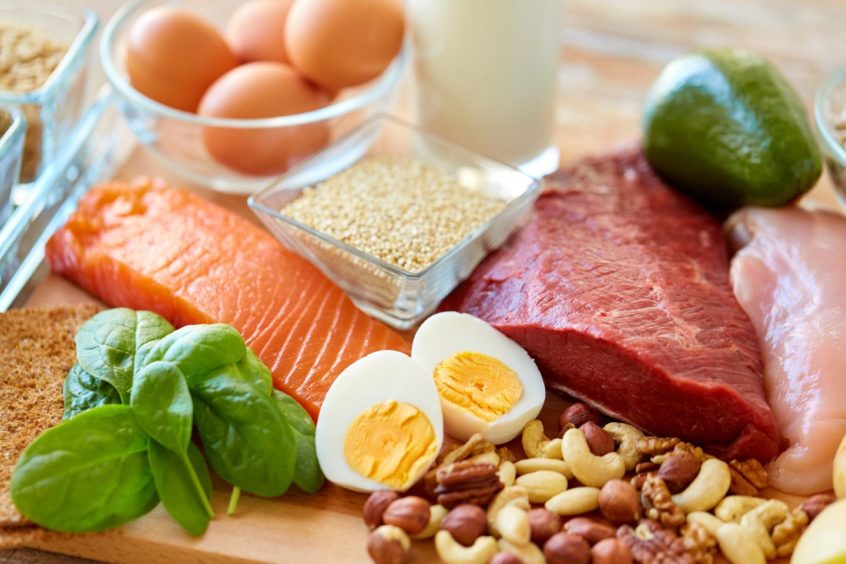Clare Johnston talks to The Family Encyclopedia of Health author, Dr Rajendra Sharma, to find out why a lack of essential nutrients can be overlooked as the cause of unwanted symptoms.
For anyone who might be feeling tired or rundown, it’s easy to blame life’s stresses and strains.
But a leading practitioner of integrated medicine, combining traditional and complementary approaches, says nutritional deficiencies are too often overlooked – and the solutions to some of our ailments could simply be found in what we eat and drink.
Dr Rajendra Sharma, who is the author of The Family Encyclopedia of Health, and Live Longer, Live Younger, believes as many as 80% of preventable conditions could be down to nutritional deficiencies.
One of the most common deficiencies is vitamin D – sourced through both sunlight and diet – with one in five Britons thought to be deficient all year round while another one in three rises above the threshold only in the summer months.
But deficiencies in B12, iron – particularly in pregnant and menstruating women – calcium and magnesium are also among those more frequently found.
And, Dr Sharma warns, a “normal” blood test result at the GP surgery does not necessarily mean we wouldn’t benefit from increasing our intake of key nutrients.
He explained: “As rushed physicians, we can look at a test result and read it as normal as it fits into the population reference range. This doesn’t necessarily reflect the whole truth.
“If you take Vitamin B12, for instance, the result can be normal within the reference range but not normal for the individual. Compounds such as Vitamin B12 have a broad reference range of 180 to 1000 pg/ml. To assume someone with a result of 200 is ‘normal’ is not a good idea. They could have previously been living their lives up to a level of 800.
“Reference ranges can vary from lab to lab let alone country to country and race to race.”
Symptoms of Vitamin B12 deficiency include extreme tiredness, lack of energy, pins and needles, mouth ulcers, muscle weakness, low mood and problems with memory. It can be caused by poor diet, certain medications including proton pump inhibitors – used to treat stomach acid – and pernicious anaemia which prevents your body from absorbing sufficient levels of the vitamin. It tends to be more common among older people with one in 10 people over the age of 75 thought to have a deficiency.
Dr Sharma added: “It is so very important to listen to the patients and the symptoms as well as analysing the result. At the moment a lot of lab results come back to general practice saying, ‘No further action’, and that may be incorrect.”
Instead, Dr Sharma believes greater attention needs to be paid to the role of nutritional deficiencies in a range of health conditions.
“It’s feasible to put about 80% of conditions down to deficiency,” he said, adding that we owe it to ourselves to pay closer attention to our own nutritional and activity levels.
He said: “My advice would be that everybody should go to the gym or have some clear, defined daily exercise. Everyone should eat as well as they can, and we also need to have companionship. These are things we know from a health point of view are good for us.
“If you have concerns around diet, go and see a nutritionist. They can look at what you’re eating, see what’s missing and have a good knowledge of the conditions associated with those deficiencies.”
Common vitamin deficiencies, the signs, and the foods to eat to tackle them
Vitamin D
Symptoms of a vitamin D deficiency include muscle weakness, bone pain, poor immune function, and depression. A lack of vitamin D can also contribute towards osteoporosis. In April, the Scottish Government restated its advice for the public to take a daily supplement amid concerns that the coronavirus lockdown would limit the amount of sunshine people were exposed to. Vitamin D is derived from sunlight, but can also be sourced from a range of foods including oily fish, egg yolk, liver, fortified products like cereals and yoghurts, and mushrooms.
Vitamin B12
Essential for the formation of red blood cells and for a healthy immune system, symptoms of deficiency include a lack of energy, muscle weakness, low mood and heart palpitations. Foods such as meat, liver, shellfish, eggs, and milk are good sources, while vegans can use nutritional yeast to help increase their intake.
Iron
Iron is essential for the formation of red blood cells. A lack of it in our diets causes iron deficiency anaemia, with symptoms including fatigue, pale skin, shortness of breath, and palpitations.
Foods high in iron include red meat, sardines, egg yolks, beans, dark green leafy vegetables, lentils and soybeans. Eating foods high in vitamin C such as citrus fruits and strawberries has also been shown to increase your iron absorption.
Magnesium
A lack of magnesium can cause muscle cramps, restless legs and fatigue. Good sources include seafood, broccoli, cabbage, sprouts, grains, nuts, and chocolate.
Calcium
Signs of deficiency include weak or brittle finger nails, muscle aches and cramps as well as numbness or tingling in the extremities, while long-term calcium deficiency can lead to dental problems and osteoporosis, which causes the bones to become brittle.
Three servings of dairy products a day are recommended, and you can also source calcium from green leafy vegetables such as broccoli and cabbage.
Further reading..












